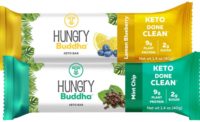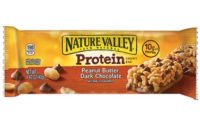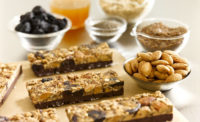The next big nutritional bar will probably have meat, kale and quinoa in it.
American snackers love their nutritional bars, but what they’re looking for in them continues to evolve. That’s according to a new report from the market research publisher Packaged Facts titled, Nutritional and Cereal Bars in the U.S., 4th Edition.
Specifically, consumers are looking for more savory flavors, vegetable proteins and superfoods in the bars, which they see as a handy way to eat smaller portions of food throughout the day.
In general, nutritional bars conform to a broad cultural shift toward healthier, good-for-you food products. And, they offer a way for marketers to attached a “healthy halo” to their product, by making them with organic, natural or gluten-free ingredients, or adding in superfoods and other functional ingredients.
Nutritional bars, which have achieved torrid sales growth in recent years, provide an especially appropriate platform to deliver the kind of dense nutrition today's consumers crave and search for — such as ancient grains and healthy seeds like quinoa, amaranth, sorghum, chia and flaxseed.
Athletes remain target market
Despite their growing popularity, the report does show that athletes and fitness buffs are still the best target market for nutritional bars, as they tend to eat more of them than any other group. Specifically, marketing that focuses on fitness and outdoor activities has proven to be the most effective.
For example, the people who eat the most nutritional bars are more likely to say they enjoy taking risks (42% vs. 34%) than others and have a higher likelihood of engaging in outdoor pursuits such as mountain/rock climbing, backpacking and mountain biking. They also are far more likely to try to stay fit by engaging in such activities as fitness walking and weight training.
Savory flavors gain momentum
However, just because the target market is the same doesn’t mean the flavors should be. The report shows that consumers who play sports and workout are starting to shy away from sweet flavors, instead being drawn to savory snacks.
Savory bars also provide flavor options for different times of the day, reflecting the fact that consumers often look to sweet flavors in the morning, and savory flavors later on.
Marketers are rushing to roll out new nutritional bars to reflect this shift in flavor preferences.
For example, the shift toward savory nutritional bars has increased the popularity of bars that offer meat as a protein source.
And, consumers can also expect to find more nutritional bars using vegetables as their protein source. Some bars already on the market include carrots, sweet potatoes, kale, broccoli, spinach, quinoa, cauliflower, lentils, bell pepper and basil.
However, several industry analysts note that savory bars will need to overcome a number of obstacles if they are to succeed in the mainstream marketplace. They are more difficult to manufacture because they lack sweeteners that act as binding agents, and marketers will still have to work to overcome the ingrained association between snack bars and sweet flavors.
Overall, the report, Nutritional and Cereal Bars in the U.S., 4th Edition:
- Focuses on trends shaping the market for nutrition and cereal/granola bars
- Provides an estimate of U.S. retail sales of nutrition and cereal/granola bars for the 2009 through 2014 period and a projection of U.S. retail sales through 2019
- Identifies marketing and new product trends
- Provides an in-depth look at today's consumers of nutrition and cereal/granola bars
For more information, visit the Packaged Facts website.
Packaged Facts, a division of MarketResearch.com, publishes market intelligence on a wide range of consumer market topics, including consumer demographics and shopper insights, consumer financial products and services, consumer goods and retailing, consumer packaged goods, and pet products and services.





